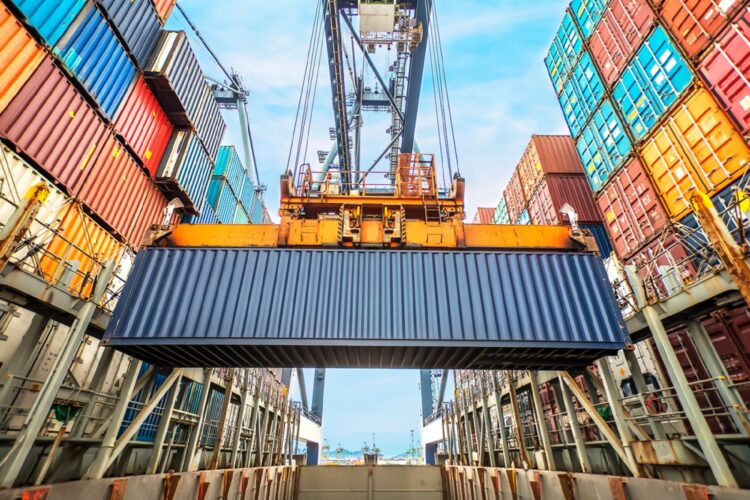Donald Trump declared that 2 April was “Liberation Day” for Americans. The US President has now unveiled his long-heralded tariff proposals to put right what he sees as a deep-set and long-established imbalance and unfairness in the world trade system. He is concerned about the loss of five million manufacturing jobs in the last 27 years, as well as the fall in the US share of global manufacturing from 28.4% in 2001 to just 17.4% today.
The president believes that the US economy’s movement towards a dependence on cheaper imports, particularly from China and other Asian sources, has undermined US supply chains, left it with too few military supplies – and adversely affected US power by making it dependent on possible future foes for supplies. He thinks it has destroyed well-paid industrial jobs at home and hollowed out the country’s industrial base.
National emergency
Mr Trump has invoked the International Emergency Economic Powers Act 1977 to allow him to proceed by imposing tariffs on countries that impose high tariffs and other barriers on US trade. From 5 April, he will impose a universal tariff of 10%, with many countries attracting a higher rate if they run persistent trade surpluses with the US based on restrictive policies and high tariffs.
Energy, lumber, pharmaceuticals, copper and semiconductors are exempted from the tariff.
The US wishes the world to understand in future access to the US market will be a privilege to be negotiated, not a right. The administration draws attention to up to $600bn of theft of intellectual property and counterfeit goods in world trade, at the expense of the US.
The special 25% tariffs already imposed on steel, aluminium and autos remain in place.
The position of individual countries
The UK and Australia just face the basic 10% tariff on goods with the exemptions above. Services, which form the bulk of UK trade with the US, are not affected.
The UK is criticised for imposing non-science-based standards on imports of chicken and beef to keep out US product. The UK is in negotiation with the US over its digital services tax aimed at US companies, over food products and other issues with a view to reaching an agreement. In Northern Ireland, the Windsor settlement is a complication with different European Union (EU) and UK trade arrangements being imposed by the US.
The EU will pay a 20% tariff and Japan a 24% tariff. Germany and Japan are accused of pursuing policies which suppress domestic demand and favour exporting. The EU has numerous non-tariff regulatory barriers to trade and charges higher tariffs on items like cars and food products than the US.
China is to pay an additional 34% tariff as the biggest offender with the largest trade surplus.
China is to pay an additional 34% tariff as the biggest offender with the largest trade surplus. A wide range of non-market policies including subsidies, managed prices and use of cheap labour are allied to tariffs and bans on access to the Chinese market.
Taiwan faces a tariff of 32%, Thailand 36%, and Cambodia 49%. The clutch of Asian nations that have become sources of cheap industrial goods for the US are targeted with high tariffs.
India attracts a tariff of 26%. Whilst India imposes high tariffs and other barriers there are current talks about a trade agreement with Washington. India's 80% tariff on imported rice gets a mention in the fact sheet as one of the worst examples of the trade issues that have sparked Mr Trump’s ire.
What happens next?
The 10% tariff comes into effect on 5 April and the higher tariffs on 9 April. Any country or trading region that retaliates with higher tariffs will face further rises in US tariffs. Any trade partner that sits down to talk with the US about removing or reducing their own impediments to fair trade can hope to negotiate abatements or cancellations.
The impact of the measures
The measures have had a predictable negative impact on stock markets. They have fallen on speculation of what might be announced and fallen a bit more on the announcement as it was at the high end of the anticipated range of tariff outcomes. Most forecasters see these higher tariffs reducing growth worldwide and adding to inflation. They are unhelpful but are unlikely to tip the US or the wider world into recession, as some fear.
The US assessment is that these measures will lead to $728bn in extra output for the US following onshoring and domestic investment in additional industrial capacity. They expect an extra 2.8 million jobs will be created as a result.
There is no inflation forecast, but they quote Janet Yellen and various studies as saying that, in the past, tariffs may not bring about inflation. Tariffs deter exports into the country imposing them but can lead to discounted dumping of these products into other markets.
The likely outcome
Canada and the EU are likely to retaliate, intensifying headlines about a trade war. Others, such as the UK, will progress negotiations to seek compromise with the US where there are genuine issues about level playing fields and reciprocity.
The Trump camp is divided between those who would like to get other countries to lower their barriers allowing the US to cut tariffs again and those who see general tariffs as a great source of revenue to narrow the budget deficit and pay for more US tax cuts. It looks as if both will get something as events play out, with some countries and the EU going for retaliation and others for compromise. We are going to see more negative headlines and some elimination of restrictions on trade before this is over.
Nothing on this website should be construed as personal advice based on your circumstances. No news or research item is a personal recommendation to deal.
How damaging are the Trump tariffs?
Read this next
How should investors react to the current tariff uncertainty?
See more Insights